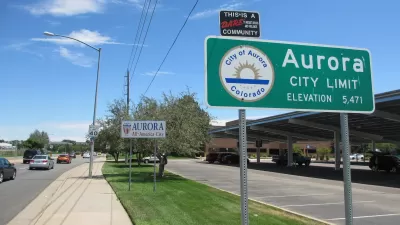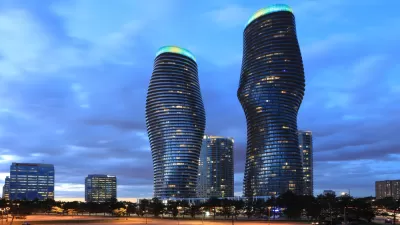As our suburbs diversify, the most affordable commercial districts found in such areas (often in strip malls) become an important entry point for immigrants to build their 'American Dream'. Kaid Benfield asks if such opportunities deserve protection.
"There is little question that suburban strip malls represent an unsustainable architecture," writes Benfield. "Totally automobile-dependent, marked by large surface parking lots, and remarkably inefficient at using land, strip malls generate much more pollution and consume much more in the way of resources on a per capita basis than do more walkable, urban shopping districts. Such urbanist thinkers as Galina Tachieva (Sprawl Repair Manual), June Williamson and Ellen Dunham-Jones (Retrofitting Suburbia) are absolutely correct in urging that, as these malls age and decline, they should be replaced with better, greener forms."
"And yet: As these properties have declined, so have their rents, making them affordable to small, often entrepreneurial businesses. Particularly as immigrants have settled in inner suburbs (where many of these fading commercial strips are), businesses owned and patronized by the immigrant population have occupied many of these spaces, in some cases alongside small start-ups owned by longtime community residents as well."
Planners have recognized the adverse impacts of redevelopment on affordable housing and responded with inclusionary zoning laws to help prevent displacement. "But, as far as I know," adds Benfield, "there is no comparable, widely understood ethic to protect small, often minority businesses that are harmed by otherwise beneficial neighborhood change, and I am wondering whether there should be."
FULL STORY: As we remake suburbs, should we guard against "commercial gentrification"?

Pennsylvania Mall Conversion Bill Passes House
If passed, the bill would promote the adaptive reuse of defunct commercial buildings.

Coming Soon to Ohio: The Largest Agrivoltaic Farm in the US
The ambitious 6,000-acre project will combine an 800-watt solar farm with crop and livestock production.

World's Largest Wildlife Overpass In the Works in Los Angeles County
Caltrans will soon close half of the 101 Freeway in order to continue construction of the Wallis Annenberg Wildlife Crossing near Agoura Hills in Los Angeles County.

California Grid Runs on 100% Renewable Energy for Over 9 Hours
The state’s energy grid was entirely powered by clean energy for some portion of the day on 37 out of the last 45 days.

New Forecasting Tool Aims to Reduce Heat-Related Deaths
Two federal agencies launched a new, easy-to-use, color-coded heat warning system that combines meteorological and medical risk factors.

AI Traffic Management Comes to Dallas-Fort Worth
Several Texas cities are using an AI-powered platform called NoTraffic to help manage traffic signals to increase safety and improve traffic flow.
City of Costa Mesa
Licking County
Barrett Planning Group LLC
HUD's Office of Policy Development and Research
Mpact Transit + Community
HUD's Office of Policy Development and Research
Tufts University, Department of Urban and Environmental Policy & Planning
City of Universal City TX
ULI Northwest Arkansas
Urban Design for Planners 1: Software Tools
This six-course series explores essential urban design concepts using open source software and equips planners with the tools they need to participate fully in the urban design process.
Planning for Universal Design
Learn the tools for implementing Universal Design in planning regulations.

























